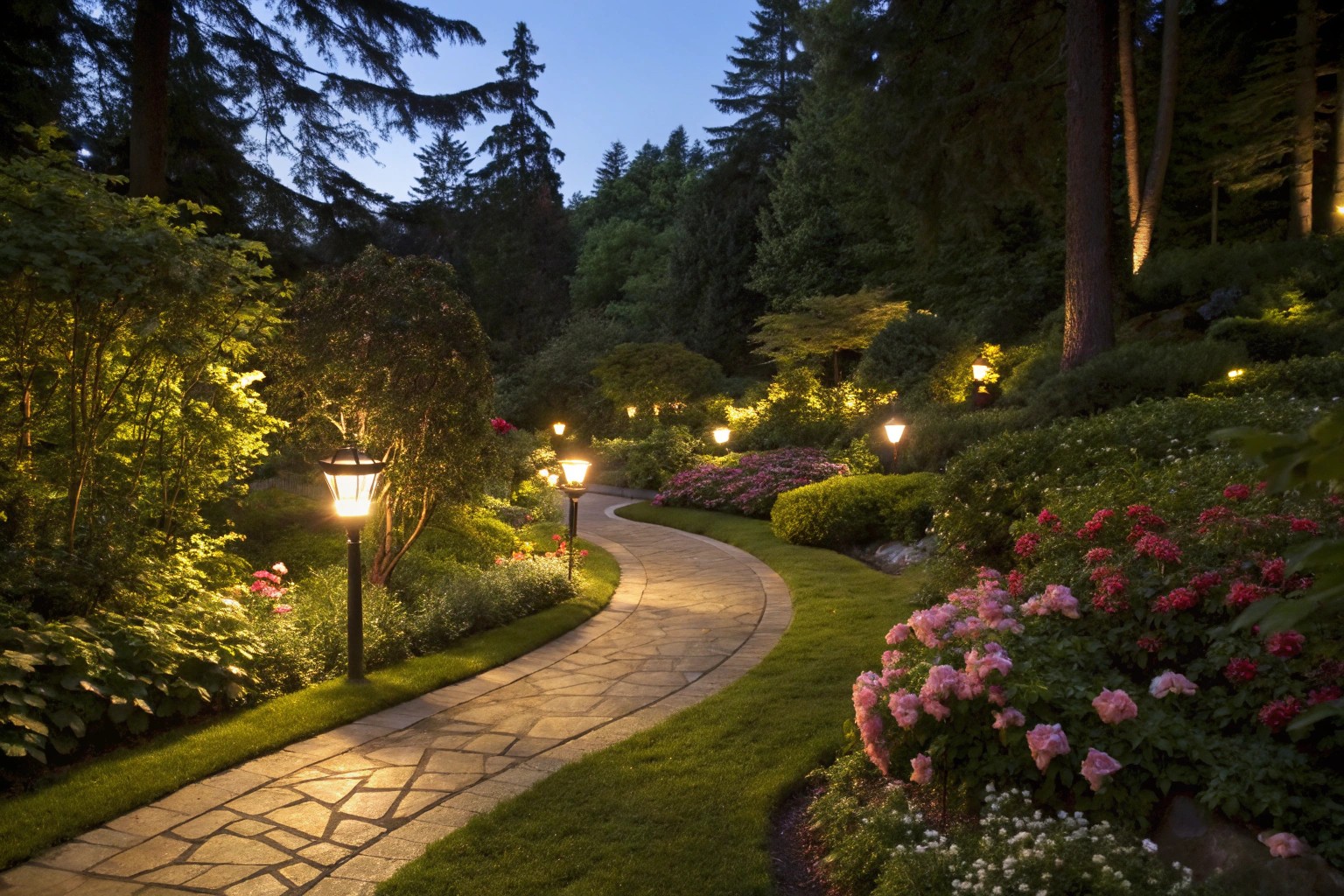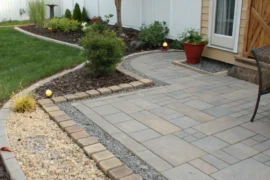Creating enchanting outdoor spaces that come alive after dark doesn’t require electrical expertise or complicated installations. Today’s innovative lighting solutions offer simplicity and drama without the headache of extensive wiring. As a garden designer who’s transformed hundreds of ordinary yards into magical nighttime retreats, I’ve seen firsthand how proper lighting extends living spaces and creates memorable outdoor experiences. This guide will walk you through practical approaches to garden illumination that maximize beauty while minimizing complexity.
Understanding Garden Lighting Fundamentals
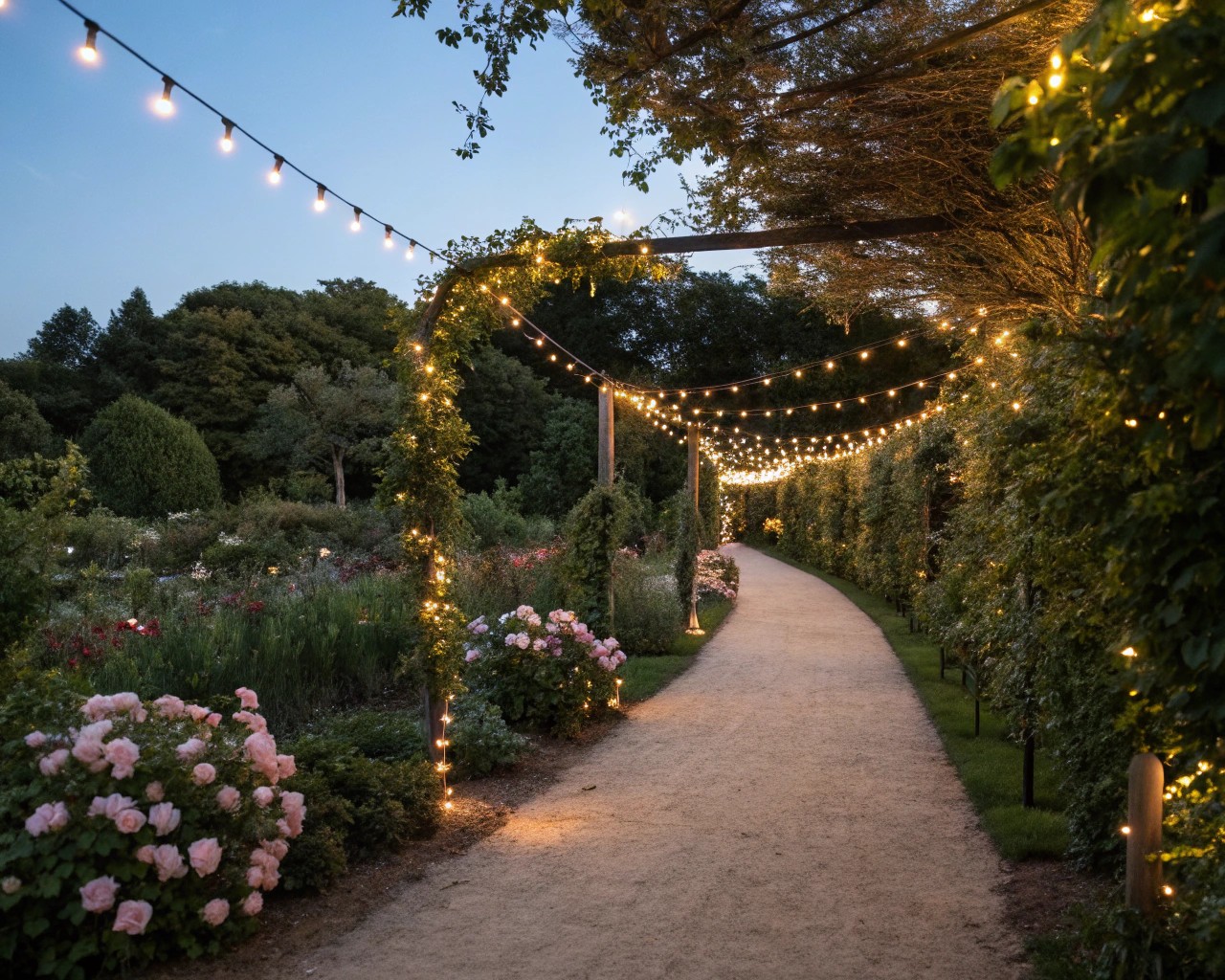
Garden lighting serves multiple purposes beyond simply helping you navigate in the dark. Well-designed lighting creates atmosphere, highlights architectural and natural features, ensures safety, and extends the usability of your outdoor spaces long after sunset.
The Three Essential Lighting Types
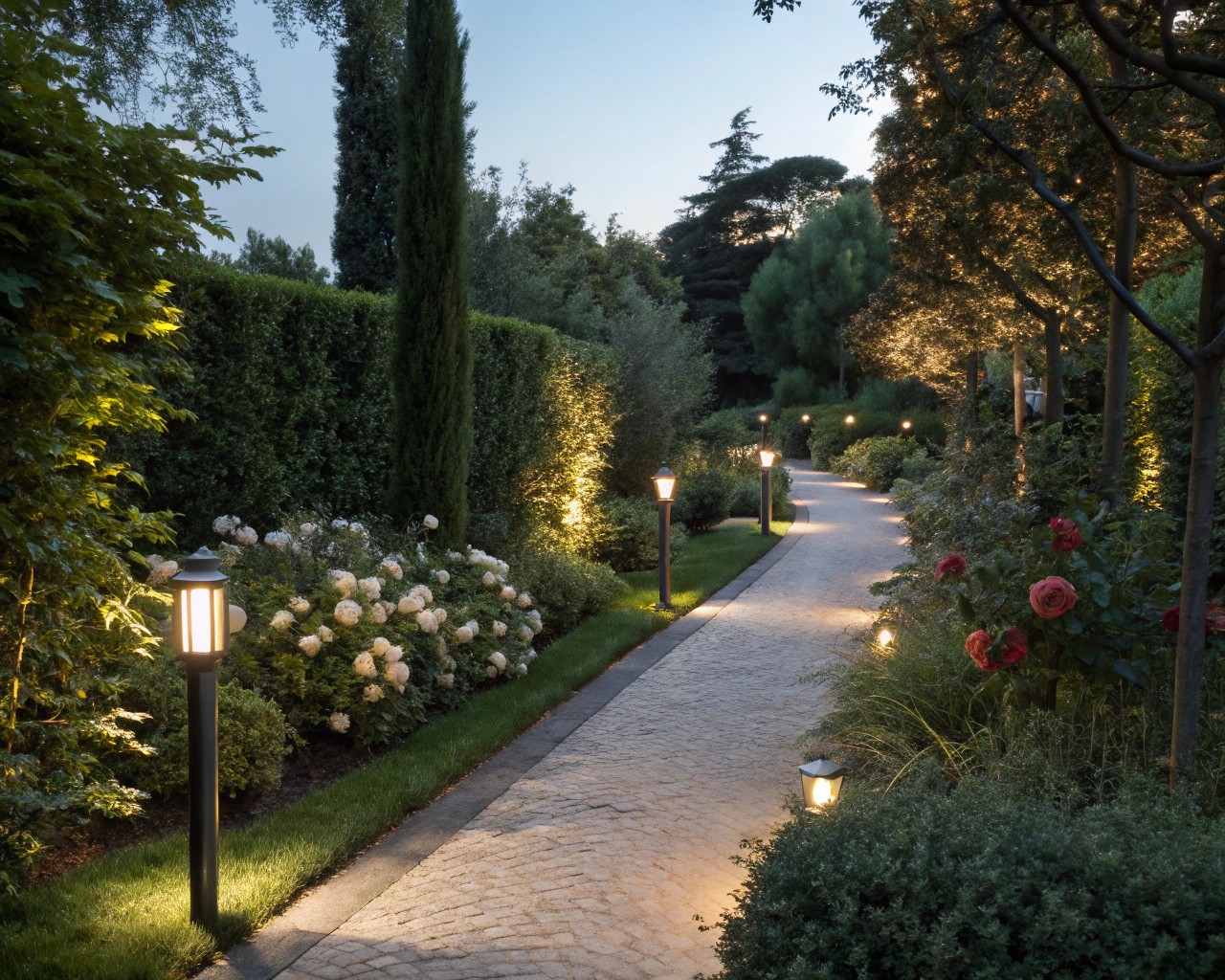
Just as with interior spaces, effective garden lighting incorporates three distinct categories:
-
Ambient Lighting: This provides overall illumination, making outdoor areas safe and comfortable to navigate. Ambient lighting establishes the mood and creates the foundation of your lighting scheme. Festoon lights draped around a garden or wall-mounted fixtures that softly illuminate patio perimeters serve as excellent ambient light sources.
-
Task Lighting: This focused, brighter lighting facilitates specific activities such as cooking, reading, or safely walking along paths. Bollard lights installed along walkways ensure safe passage, while bulkhead lights mounted near outdoor kitchens provide concentrated illumination for cooking without straining your eyes.
-
Accent Lighting: This type highlights specific features in your garden, such as specimen plants, water features, or architectural elements. Accent lighting adds depth and dimension, transforming flat nighttime spaces into dynamic environments.
I’ve found that balancing these three types creates the most successful nighttime gardens. Many of my clients initially focus only on path lighting but are amazed at how accent lighting dramatically enhances their garden’s nighttime appeal.
The Psychology of Light and Shadow
The interplay between light and shadow creates the magic in nighttime garden design. When I’m planning a lighting scheme, I’m not just thinking about illumination but about crafting an emotional experience.
Properly lit gardens evoke feelings of:
- Security and welcome
- Mystery and discovery
- Intimacy and romance
- Drama and excitement
A Hobhouse Court project in Westminster, London, perfectly illustrates this principle. The designers successfully created what they described as “a green, hidden oasis in the heart of the city,” a secret garden inviting discovery through careful lighting that complemented the surrounding architecture.
Wire-Free Solutions for Every Garden
Solar-Powered Options
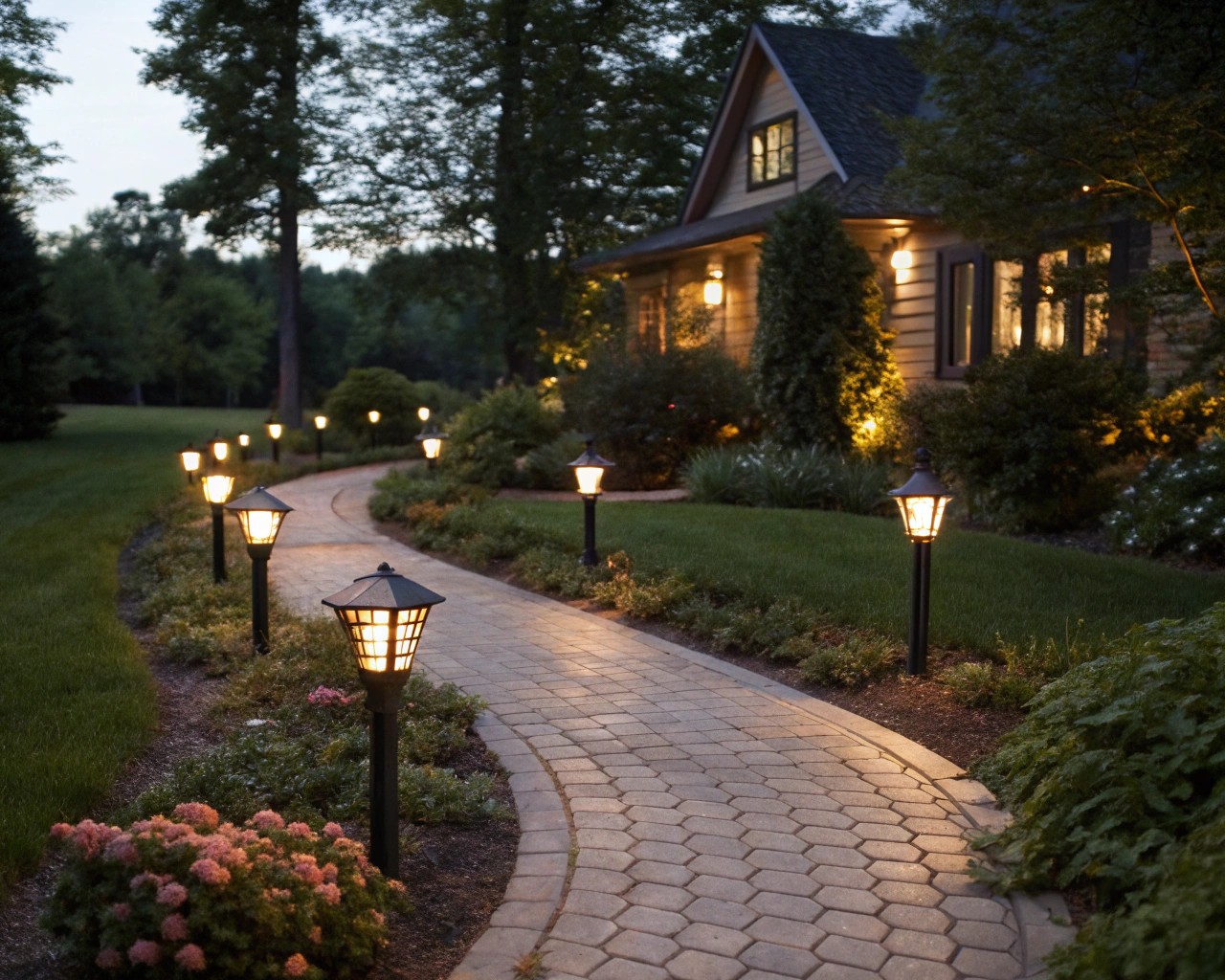
Solar garden lights represent the ultimate in wire-free convenience. These lights harness solar energy during daylight hours and use that stored power to illuminate your garden at night.
Modern options, like the “SolarGarden Solar Garden Lights,” showcase advanced solar technology. They boast an eco-friendly design requiring no wiring or complex setup. Manufacturers highlight their ability to transform outdoor areas into enchanting spaces while being both environmentally conscious and budget-friendly, as they operate solely on solar power without adding to electricity costs.
Benefits of solar lighting include:
- No wiring needed for quick, hassle-free setup
- Complete flexibility in placement
- Zero electricity costs
- Environmentally friendly operation
- Wide variety of available styles
The primary limitation remains their dependence on sunlight. For gardens with significant shade, solar may not be optimal for all areas. I recommend mapping sun patterns across your garden before investing in solar lighting.
Battery-Operated Options
Battery-powered lights offer another wire-free solution that doesn’t depend on solar exposure. Modern LED technology means these lights can run for extended periods before requiring battery replacement or recharging.
Many battery-operated lights now come with remote controls or smartphone connectivity, allowing you to adjust lighting without physically accessing each fixture.
Comparison: Solar vs. Battery-Operated Lighting
| Feature | Solar-Powered Lighting | Battery-Operated Lighting |
|---|---|---|
| Installation | Easy installation without wiring | Simple installation, no wiring required |
| Power Source | Sun | Replaceable or rechargeable batteries |
| Reliability | Depends on sunlight; less reliable in cloudy conditions | Consistent performance regardless of weather |
| Flexibility | Can be easily moved to different locations | Fully portable and repositionable |
| Environmental Impact | Powered by renewable energy | Battery waste concerns, though rechargeable options reduce this |
| Brightness & Duration | Generally less bright with limited duration depending on sunlight exposure | Often brighter with predictable duration based on battery capacity |
| Cost Over Time | Higher upfront cost, virtually no operating cost | Lower initial cost, ongoing battery replacement expense |
| Ideal Locations | Sun-exposed areas | Anywhere, including shaded spots |
| Maintenance | Clean solar panels periodically | Replace batteries as needed |
Smart Lighting Systems for Modern Gardens
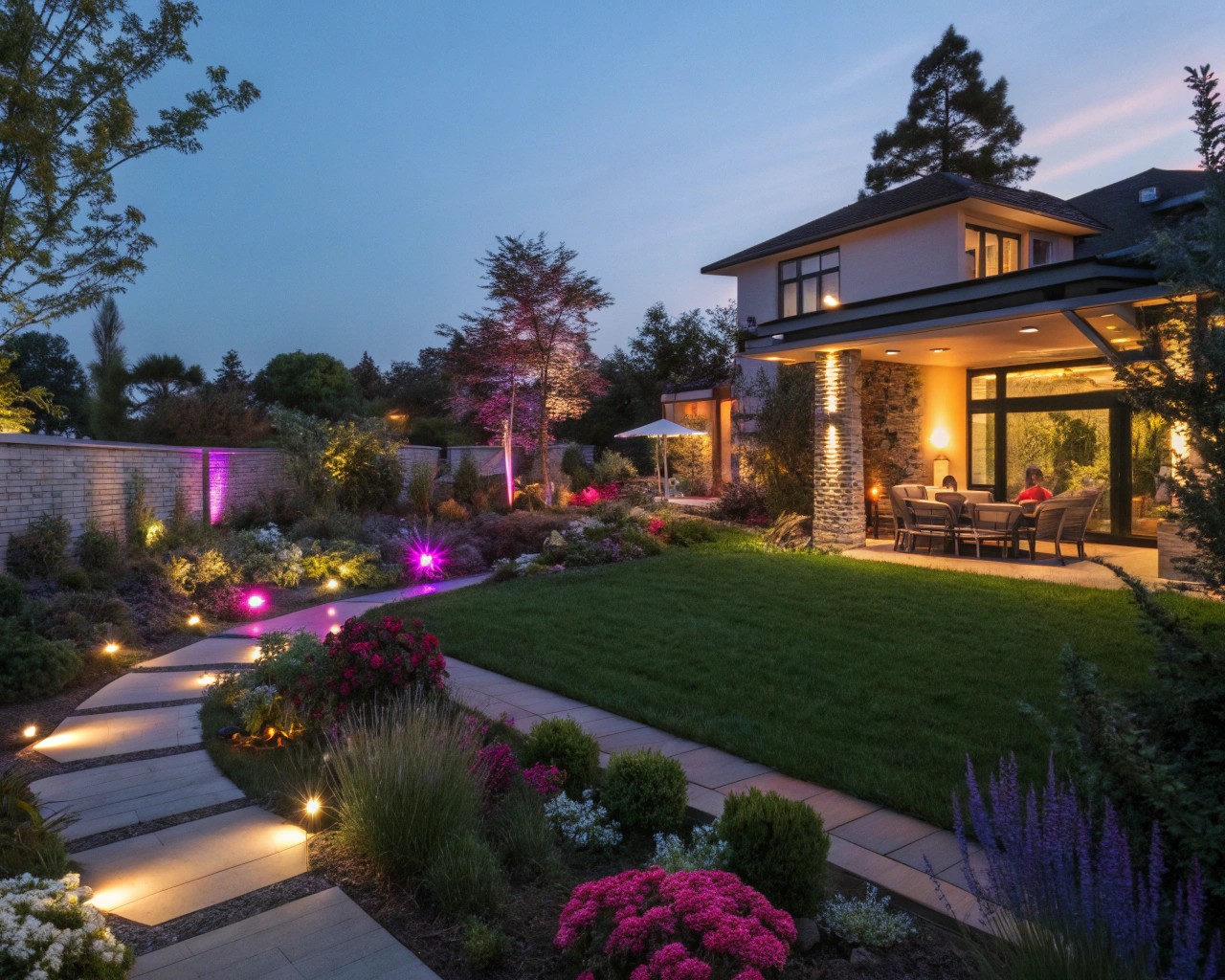
Smart lighting systems represent the cutting edge of outdoor illumination, allowing unprecedented control over your garden lighting without requiring complex wiring installations.
What Makes Garden Lighting “Smart”?
Smart garden lighting typically includes one or more of these features:
- Remote control via smartphone apps
- Programmable timers and schedules
- Motion sensors for automatic activation
- Integration with voice assistants like Amazon Alexa or Google Assistant
- Color-changing capabilities
- Energy usage monitoring
- Integration with other smart home systems
Scheduling capabilities are often cited as one of the most practical advantages of smart outdoor lighting. Without automation, it’s common to forget to turn lights on, a fact easily confirmed by observing how many homes remain dark after sunset.
Smart Lighting Options for Every Budget
Several standout systems offer wire-free smart capabilities:
-
Wi-Fi Connected Systems: The LEDVANCE Wifi SMART+ Outdoor Garden LED Spot offers RGB color control with approximately 16 million color possibilities. These systems connect directly to your home’s Wi-Fi network and can be controlled via smartphone apps.
-
Solar Smart Pathways: The Ring Solar Pathlight is an excellent choice for areas like poorly lit walkways, driveways, or yards. It provides elegant, bright white light without the need for underground wiring or frequent battery changes. Users report excellent performance even after years of continuous use.
-
Smart String Lights: Feit Electric LED Smart String Lights are versatile enough for decks, fences, garages, sheds, or pool areas. A standard 24-foot strand includes 12 bulbs and can be extended significantly, offering adjustable white tones, colors, and pre-programmed effects suitable for holidays and parties.
Creating Scenes for Different Occasions
One of my favorite aspects of smart lighting is the ability to create distinct “scenes” for various occasions. We can program different lighting configurations for:
- Dining Mode: Softer, warmer lighting focused on entertainment areas
- Security Mode: Brighter illumination across the entire garden
- Party Mode: Dynamic, colorful effects that energize the space
- Relaxation Mode: Subtle, low-level lighting for unwinding
A client in Colorado initially questioned the value of scene programming, but after experiencing how different lighting transforms the feel of their outdoor space, they now regularly switch between scenes for different activities.
Design Principles for Magical Night Gardens
Creating a truly magical nighttime garden involves more than just placing lights randomly. Strategic design transforms ordinary spaces into extraordinary experiences.
Lighting Pathways and Boundaries
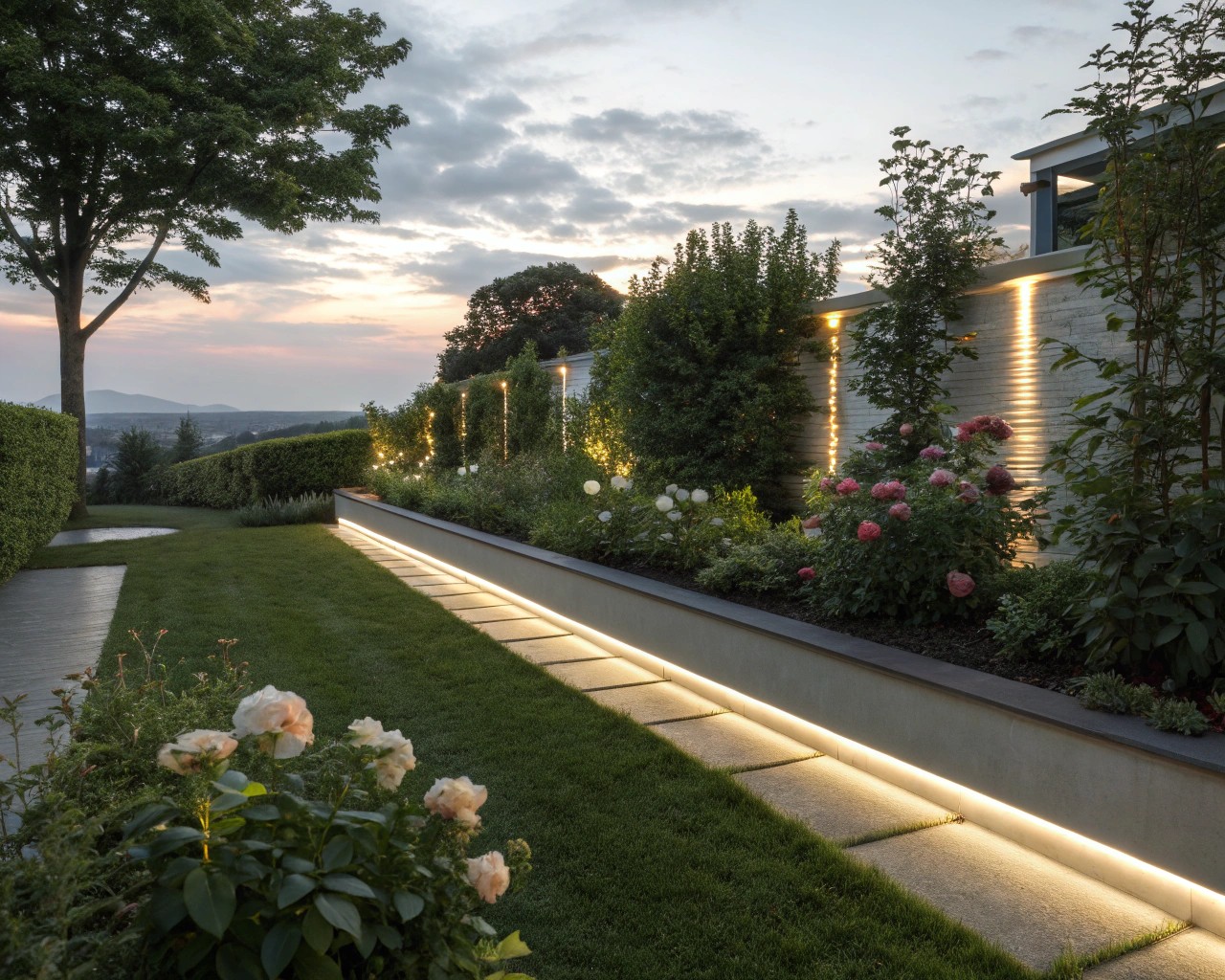
Path lighting serves both practical and aesthetic purposes. For safety, paths should be evenly lit without harsh glare or confusing shadows. For beauty, path lights should complement the garden’s style.
When lighting hedges and borders, there are several effective approaches:
- If flowerbeds exist in front of a hedge, adjustable spotlights can illuminate the hedge directly, creating a visible light barrier that defines the border.
- Without flowerbeds, spotlights placed within the hedge, directing light downwards, can define the border with light spots subtly hidden among the leaves.
- For walls instead of hedges, LED strips installed at the base can trace a continuous band of light along the perimeter.
A critical mistake to avoid is projecting light from a hedge or boundary *inward* towards seating areas. As lighting experts caution, this approach will “dazzle the people dining outside.” This not only creates uncomfortable glare but also compromises security, potentially hiding intruders in shadow while blinding occupants.
Creating Layers of Light
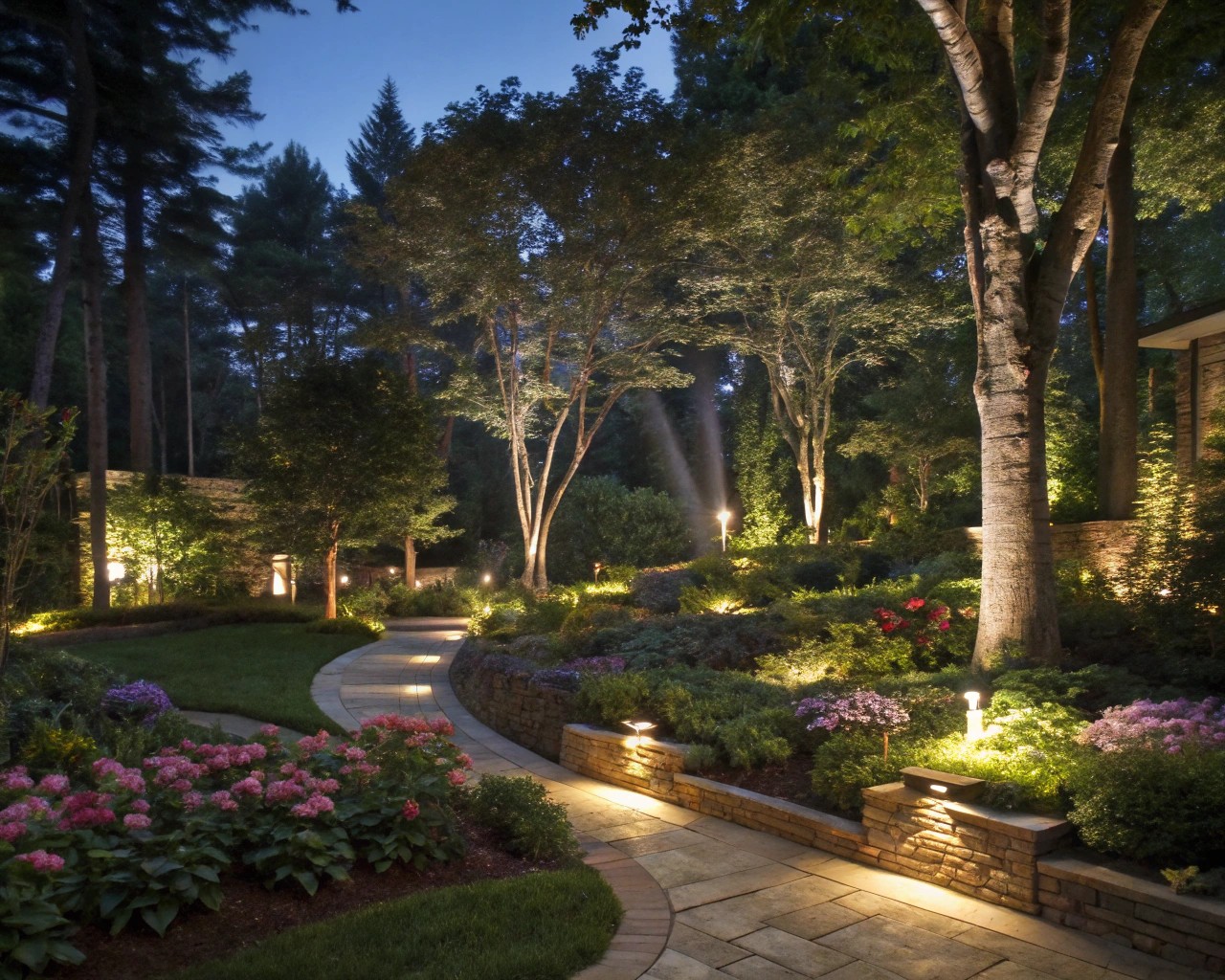
Just as with interior design, layering light creates visual interest and depth in garden spaces:
- Base Layer: Low-level ambient lighting that provides general illumination
- Mid-Layer: Accent lighting that highlights key features
- Upper Layer: Overhead lighting like string lights or downlights from trees
One effective technique I’ve used in several projects is including lighting at varied heights. Ground-level path lights, mid-height shrub lighting, and overhead tree lighting create a full, three-dimensional experience that feels immersive and magical.
Using Sensors for Efficiency and Convenience
Integrating sensors enhances both functionality and energy efficiency:
-
Motion sensors activate lights automatically when they detect movement, ideal for security and convenience. They deter intruders and provide illumination only when needed, saving energy. They work perfectly for entryways, walkways, and dark corners.
-
Light sensors (photocells) automatically adjust outdoor lighting based on ambient light levels. As daylight fades, these sensors trigger lights to turn on, and as dawn approaches, they turn them off. This ensures your garden is lit when necessary while conserving energy when it’s not.
-
Proximity sensors detect the presence of objects or people within a specific range rather than motion. They can create specialized lighting effects or illuminate areas where continuous motion detection isn’t appropriate.
Case Studies: Transformations Without Wiring
The Forgotten Backyard Transformation
A family near Baltimore contacted me about transforming their backyard into a stunning space for day and night enjoyment. They wanted to highlight their pool, pavilion, and landscaping in a functional way while maintaining a warm, inviting atmosphere.
The challenge was creating outdoor lighting that wasn’t harsh or overpowering but rather indirect illumination that showcased details like stonework and trees. Working around tight spaces and existing structures required thoughtful design.
We implemented a combination of solar pathway lights, battery-operated spotlights for trees, and weatherproof smart string lights around the pavilion. The result was a backyard that, in the client’s words, “feels magical at night” and is perfect for relaxing, entertaining, and showcasing their outdoor investment.
The Historic Walled Garden Revival
One of my most challenging projects involved a small walled garden with over-grown shrubs and a poorly placed terrace situated in the shadiest corner under a deteriorating pergola. The existing pool had an unattractive concrete edge and was leaking.
The owners wanted evening illumination that respected the historical character without modern intrusions or complicated wiring that might damage the ancient walls.
We developed a simple design with arches leading into the garden from the house, with bold planting areas to enclose the space. The existing brick paving was lifted and reused for a new terrace positioned to catch morning and evening sun. Solar spotlights strategically highlighted the restored brick pool edging and architectural features, while battery-operated lanterns provided ambient lighting for dining.
The result was a traditional garden that maintained its historical integrity while gaining evening functionality. The client reported that summer gatherings now extended well into the evening, with guests reluctant to leave the magical atmosphere.
The Philips Estate Transformation
One homeowner vividly described transforming the nighttime view of his large property, the Philips Estate. He noted that while some areas needed significant work after winter – requiring, in his words, “total resuscitation” – the garden still looked acceptable on winter nights.
His home featured expansive sliding doors opening to the pool area with garden views beyond. While beautiful during the day, he observed that at night, “the garden was a black hole,” merely reflecting the interior lights.
His initial solution involved high-mounted floodlights on timers, programmed to shine brightly at dusk, dim later, and eventually turn off, with motion sensors reactivating them temporarily. He found, however, that while these floods lit large features, they left finer plant details obscured. This realization led him to supplement with low-voltage (12-volt) lighting, creating what he termed more “romantic illumination” that revealed the garden’s subtler textures and forms.
Installation Tips from the Field
Planning Your Layout
Before purchasing any lights, walk your garden at night with a flashlight to experiment with lighting effects. This helps identify key features worth highlighting and areas that need functional lighting for safety.
When I’m designing a lighting plan, I take photos of the garden during the day and sketch lighting positions onto printed images. This visualization helps clients understand the intended effect before installation begins.
Strategic Placement Principles
- Path Lighting: Space lights 8-10 feet apart for even illumination without creating a “runway” effect
- Uplighting: Position fixtures 1-2 feet from the base of trees or architectural elements
- Downlighting: Mount fixtures at least 9 feet high for natural moonlighting effects
- Water Features: Place lights above water where possible to avoid electrical safety issues
DIY Installation Best Practices
If you’re installing wire-free lighting yourself:
- Secure Fixtures Properly: Ensure solar or battery-operated lights are firmly anchored to prevent tipping
- Consider Sun Exposure: For solar lights, track sun patterns to optimize placement
- Hide Hardware: Camouflage light bases with plants or mulch for a cleaner look
- Test Before Finalizing: Set up lights temporarily before permanent installation to confirm the desired effect
In areas with extreme weather, products like the Feit Electric LED Smart String Lights are recommended for their resilience. Their heavy-duty cord is described as substantial enough to endure harsh elements.
Troubleshooting Common Issues
Solar Lighting Problems and Solutions
| Problem | Possible Causes | Solutions |
|---|---|---|
| Dim lights | Insufficient charging | Relocate to sunnier location; clean solar panels |
| Lights not turning on | Dead batteries; dirty solar panels | Replace rechargeable batteries; clean panels with soft cloth |
| Inconsistent performance | Weather variations | Consider hybrid solutions with battery backup |
| Short run time | Battery degradation | Replace rechargeable batteries (typically needed every 1-2 years) |
| Seasonal changes | Lower sun angle/shorter days | Adjust positioning seasonally; use hybrid solutions in winter |
Smart Lighting Troubleshooting
| Issue | Potential Cause | Resolution |
|---|---|---|
| App won’t connect to lights | Wi-Fi range issues | Move hub closer; add Wi-Fi extender |
| Lights not responding to commands | Network interference | Reset lights; update firmware |
| Scheduled programs not running | Time zone settings incorrect | Verify settings in app; check for daylight saving time adjustments |
| Uneven brightness across fixtures | Varying battery levels | Synchronize charging cycles; replace batteries together |
| System offline | Power outage or hub issue | Install battery backup for critical components |
Eco-Friendly Considerations
Our lighting choices impact more than just aesthetics. Recent research from Grand Teton National Park found that outdoor lighting affects both wildlife and human experience.
A study conducted experimental outdoor lighting in Colter Bay Village, comparing standard white LEDs with blended red-white lamps known to have less impact on bats and insects. Interestingly, despite the red-white lights having lower perceived brightness, the study found that “survey participants expressed higher ratings for visual comfort and safety under red lighting”.
When designing garden lighting, consider these ecological aspects:
- Light Temperature: Warmer lights (below 3000K) have less impact on wildlife
- Direction: Point lights downward to reduce light pollution
- Timing: Use motion sensors or timers to limit unnecessary illumination
- Brightness: Use only as much light as needed for the purpose
I’ve found that clients increasingly value these eco-friendly approaches, not just for environmental benefits but because softer, more thoughtful lighting often creates more beautiful gardens.
Energy Efficiency Approaches
Smart lighting systems can significantly reduce energy consumption through various techniques:
-
Better scheduling: Utilizing astronomical clocks for precise on/off timing can yield around 5% energy savings. Further efficiency gains come from using photoelectric cells that adjust based on real-time ambient light levels, overriding fixed schedules when appropriate.
-
Programmed dimming: Lowering light intensity during non-peak hours can increase energy savings by approximately 20%.
-
Dynamic dimming: Often referred to as “follow-me” lighting, this method—where lights brighten upon approach and dim after passing—can save an additional 15%, enhancing both efficiency and atmosphere.
According to energy experts, these adaptive control strategies collectively account for roughly half the total energy savings achievable through advanced lighting control networks.
Choosing Between Wired and Wireless Controls
While this guide focuses on wire-free solutions, it’s helpful to understand the broader control landscape:
Wired Power Line (PL) based lighting control is noted for its reliability and ability to cover long distances with many lights per segment. In contrast, wireless Radio Frequency (RF) based control operates independently of the power system and offers easy installation, often with plug-in components.
Both methods avoid the need for new control wiring. Historically, PL communications have been prevalent in Europe and Asia for outdoor lighting, while North America has leaned towards RF communications.
For maximum flexibility, advanced systems now enable “hybrid wired/wireless outdoor lighting control,” integrating all fixtures under one system using components like segment controllers with dual PL/RF capabilities, RF-PL bridges, and sophisticated management software.
However, for the typical homeowner seeking simplicity and effectiveness, fully wireless lighting solutions often represent the most practical choice.

